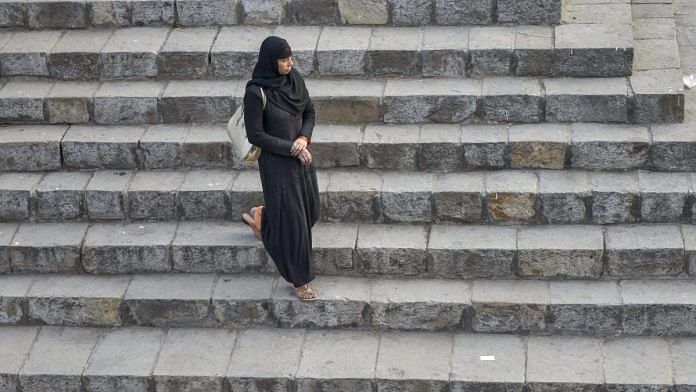New Delhi: Iranian women Tuesday participated in an anti-hijab campaign across the country, where they defied the Islamic Republic’s strict hijab rules by posting videos of themselves publicly removing their veils, Iran’s state news agency reported.
They protested on 12 July which Iran celebrates as the ‘National Day of Hijab and Chastity’, and government institutions and agencies are instructed to promote it for a week.
The country’s security forces in recent months have strictly tried to reinforce the dress code, prompting calls by women to oppose it.
On Tuesday, Iranian women’s rights activists removed their hijabs publicly and shared these videos on social media.
At the same time, the Iranian state television aired a video of a ‘Hijab and Chastity’ ceremony which showed 13 women — wearing green hijabs and long white robes – dancing to a narration that quoted verses from the Quran and stressed the importance of women being covered. The video was met with ridicule on social media.
The Islamic hijab rule has been prevalent in Iran since the Islamic Revolution in 1979. The law mandates women and girls over the age of nine to wear a head covering in public. However, its severity varies from one administration to the next, depending on the political background of the incumbent president.
Backed by the country’s very conservative religious elite, Iranian President Ebrahim Raisi described the recent backlash to the hijab law as “an organised promotion of moral corruption in Islamic society”.
Yet women have found ways around the law by wearing colourful scarves and showing some of their hair.
This raised concern among religious scholars, who said the women breached the Islamic republic’s principles of the “chastity and hijab” guidelines.
Similarly, early this month, the deputy prosecutor of Mashhad in northeast Iran wrote an order preventing women without hijabs from visiting offices and banks or using the metro. While the mayor initially opposed the decision, he eventually allowed the order.
Following this, women’s rights activists and civil activists urged citizens, including men, to resist the mandatory wearing of hijab. The call elicited a positive response with many posting videos and photographs on the morning of July 12.
New York-based International Campaign for Human Rights in Iran (ICHRI) feared “potential violence and detentions on July 12”.
The anti-hijab social media campaign has been led by US-based activist Masih Alinejad who has been behind several online campaigns in the past decade.
Ahead of the protest, Masih Alinejad tweeted: “Tomorrow Iranian women will shake the clerical regime by removing their hijab and taking to the streets across Iran to say #No2Hijab. This is called Women Revolution. In Iran #WalkingUnveiled is a crime. Iranian men will also join us”.
See how these teenagers are mocking the morality police and clerical regime by #WalkingUnveiled
It is beautiful that men are cheering for Hijab-less women in the streets. This is Shiraz, Iran. New generation will get rid of gender apartheid very soon.#No2Hijab #حجاب_بی_حجاب pic.twitter.com/7flOzi1yyt
— Masih Alinejad ?️ (@AlinejadMasih) July 12, 2022
On 12 July, she tweeted again, “As we promised!, We remove our hijabs and I hope everyone joins us. Forcing women to wear hijab is not part of Iranian’s culture. It is the culture of Taliban, ISIS and Islamic Republic. Enough is enough. #No2Hijab”.
As we promised!
We remove our hijabs and I hope everyone joins us.
Forcing women to wear hijab is not part of Iranian’s culture. It is the culture of Taliban, ISIS and Islamic Republic. Enough is enough.
#No2Hijab
pic.twitter.com/nXwiW3LqI5— Masih Alinejad ?️ (@AlinejadMasih) July 12, 2022
The hashtag #hijab_without_hijab was used in over 76,000 tweets globally on Monday and Tuesday. On the Iranian Tagminer website, the hashtag was listed as the second most popular tag in the country as of Tuesday evening.
Iranian Fars News Agency dismissed the protests, calling it an attempt by the “counter-revolution” to “promote promiscuity and bad hijab in Iran”. It claimed the hashtag failed to trend on Persian Twitter and that the main accounts speaking about the protest were anonymous and supported the US and the Shah – the former ruler who was overthrown in the 1979 revolution.
Also read: How women in Iran are dancing their way to an online revolution



